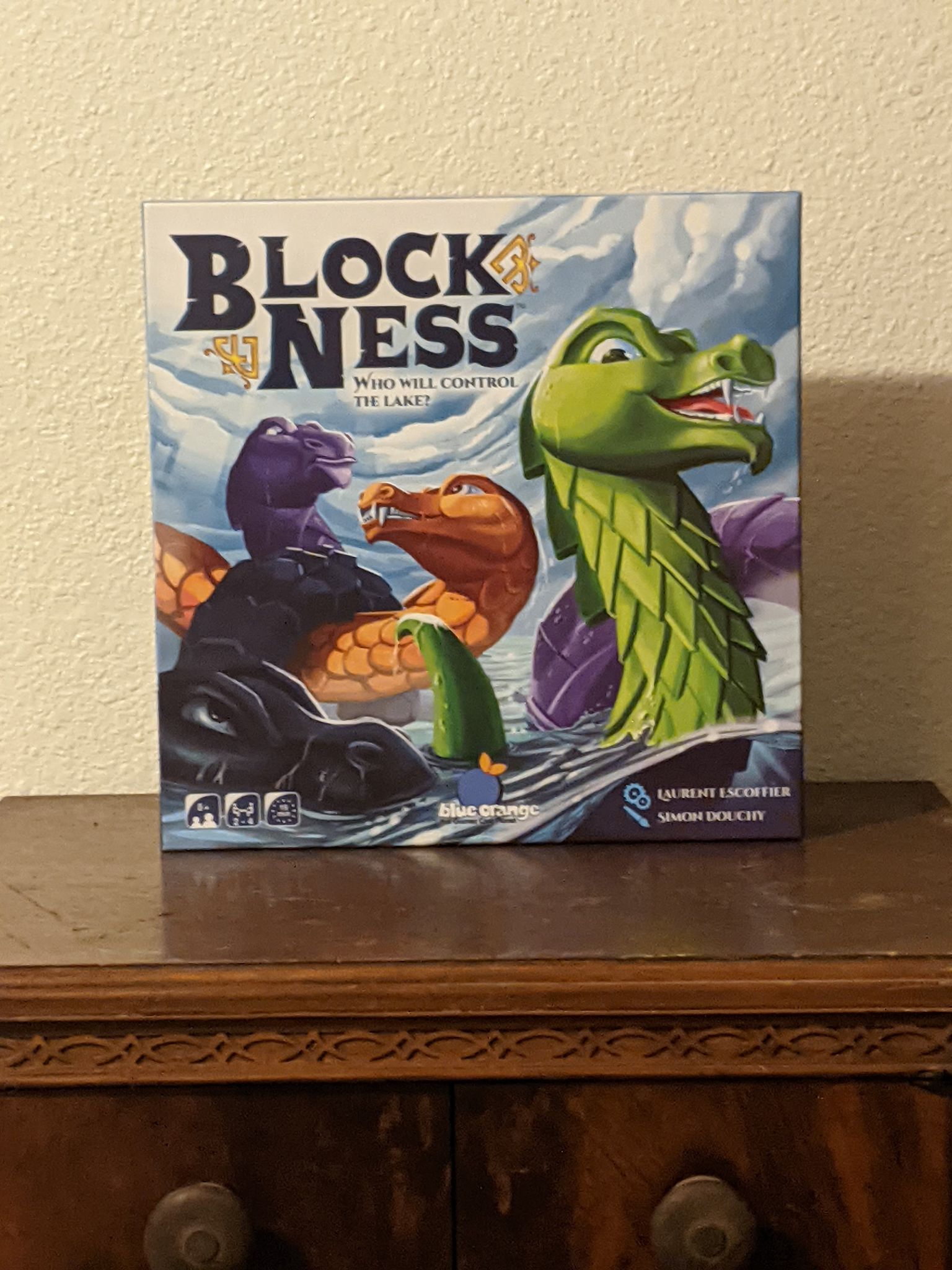Block Ness by Blue Orange Games – Ryan Miller
Years ago I was introduced to a game called Blockus by my nephews on my wife’s side of the family. It was a fun little game in which players place Tetris-like pieces on a square board to control an area. There was a lot to like about Blockus. As I continued to play the game, some of the glaring problems existing in it’s design began to appear. Block Ness, a similar style game, improves on Blockus in a number of ways in both gameplay and theme.
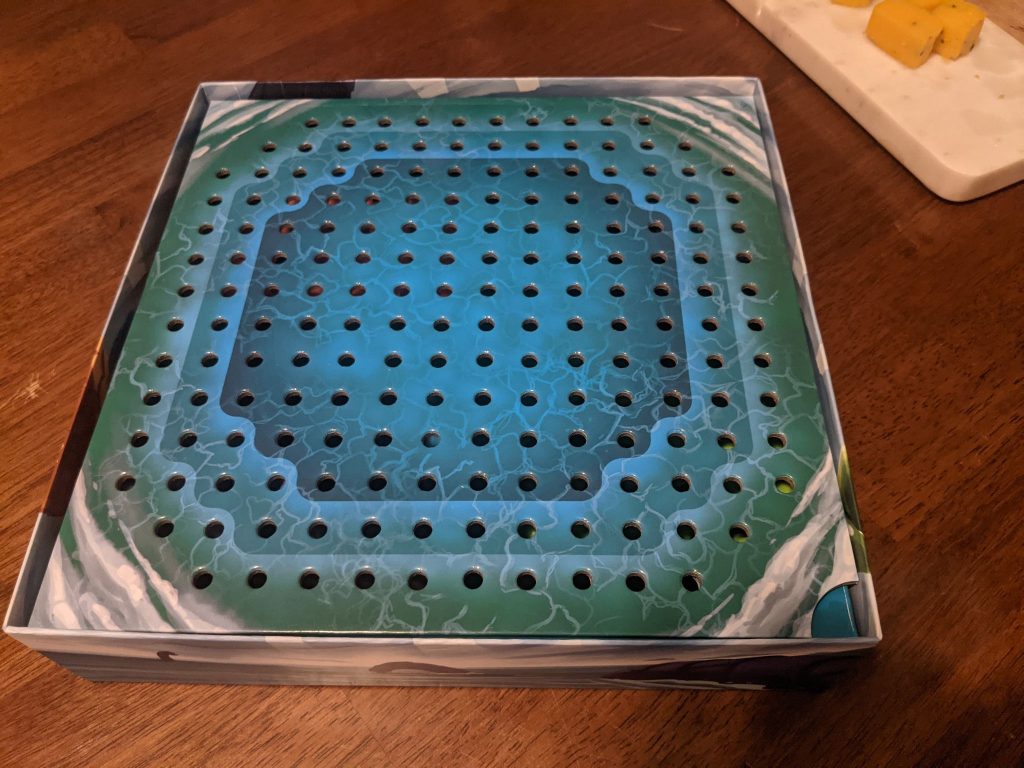
So what exactly is Block Ness?
The goal of Block Ness is to create the longest monster and control the lake. The board consists of a pegboard representing a lake with varying depths in which you place segments of your monster. The more monster segments that are placed on the board, the more difficult it becomes to play more. Once a player is out of playable segments, their time in the game comes to an end. Its a simple concept with colorful and easily distinguished pieces. The game itself is extremely quick lasting 10-15 minutes on average.
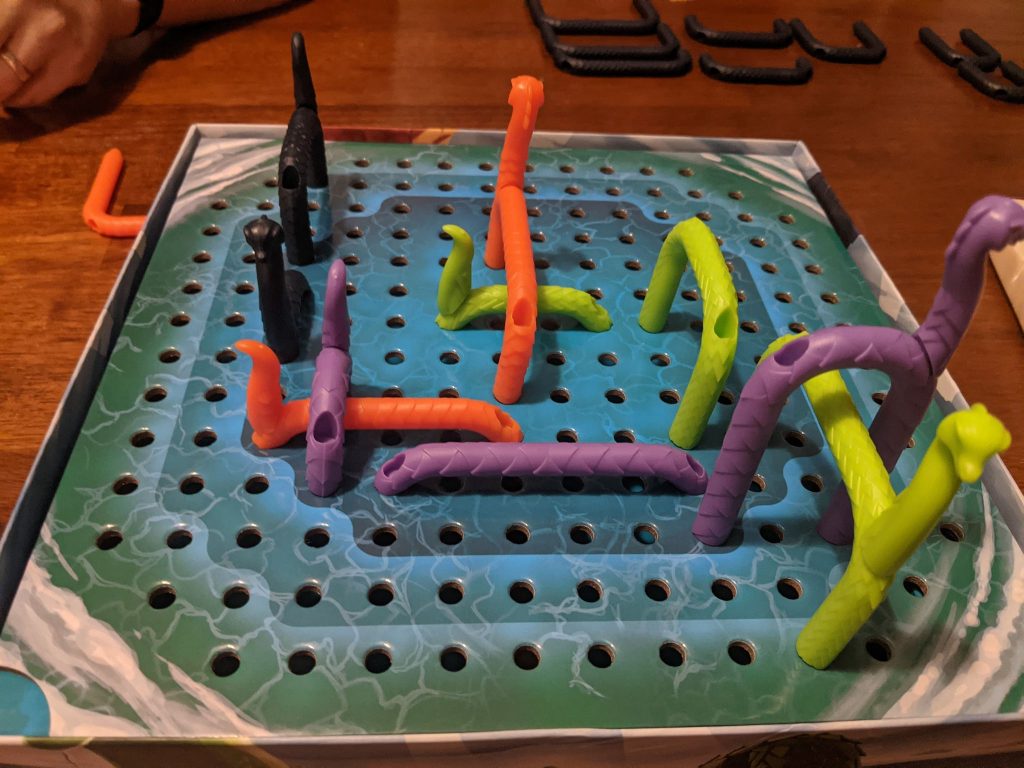
So how does this game improve or change from the Blockus format?
Spend any time with Blockus and you’ll quickly realize it is best played with four players. Given the space allotted, removing players from the game creates to much open real estate. It’s challenge is diminished quickly when you aren’t fighting as hard, or as clever, to control the board. Block Ness eliminates this problem by adjusting the playable area to suit the number of players. With two players, you play in only the deepest part of the lake. With three, you move into the middle ring. With the maximum four players, you can place anywhere in the lake. I don’t always have four players, so this is incredibly appealing to me.
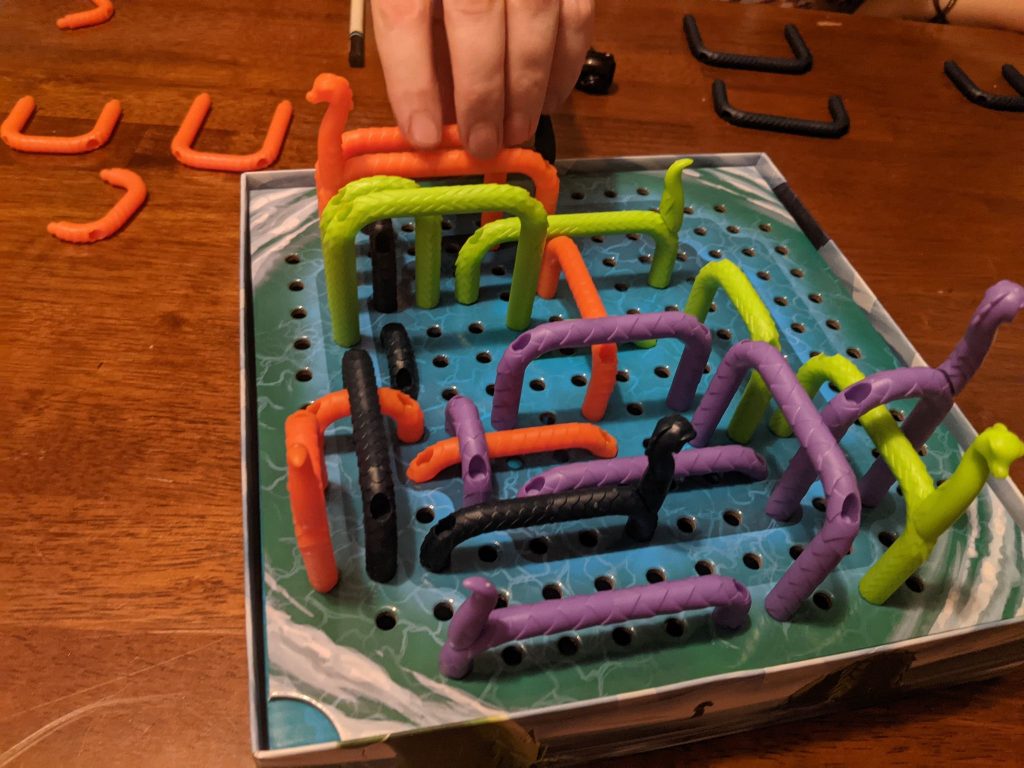
Blockus did have a rather open ended amount of choices in it’s abstract design. Not to say this is a detriment as I sincerely think its what drew me in initially. Being able to play off just about any shape’s corner was great fun. Making a monster is a little different. Obviously the theme of Block Ness is about making your very own Loch Ness Monster. To that end, you’ll always have a head and a tail. While I enjoyed the variety of Blockus piece placement, the simplified monster creation works very well. You’ll always have a head and a tail. Which of those you wish to extend on your turn is up to you.
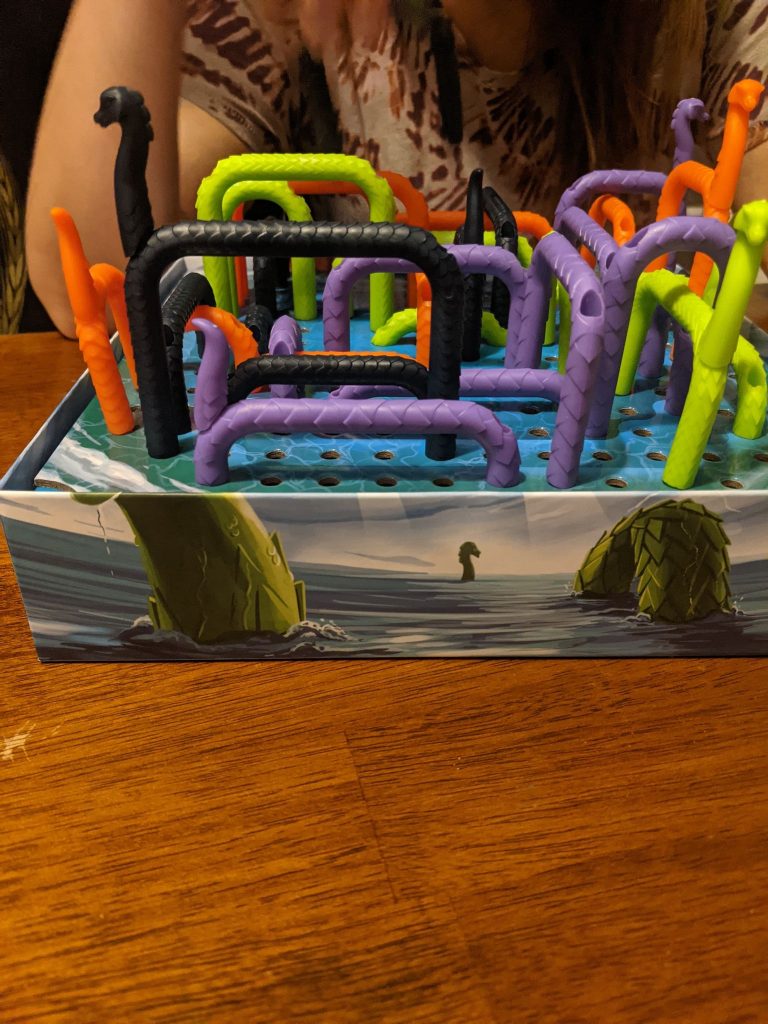
Another element I haven’t touched upon is the use of space. Block ness allows you to utilize three dimensional space to your advantage. Each segment you extend your monster with has a different length and height. You can play any piece over any segment placed on the lake so long as it isn’t a head or tail.
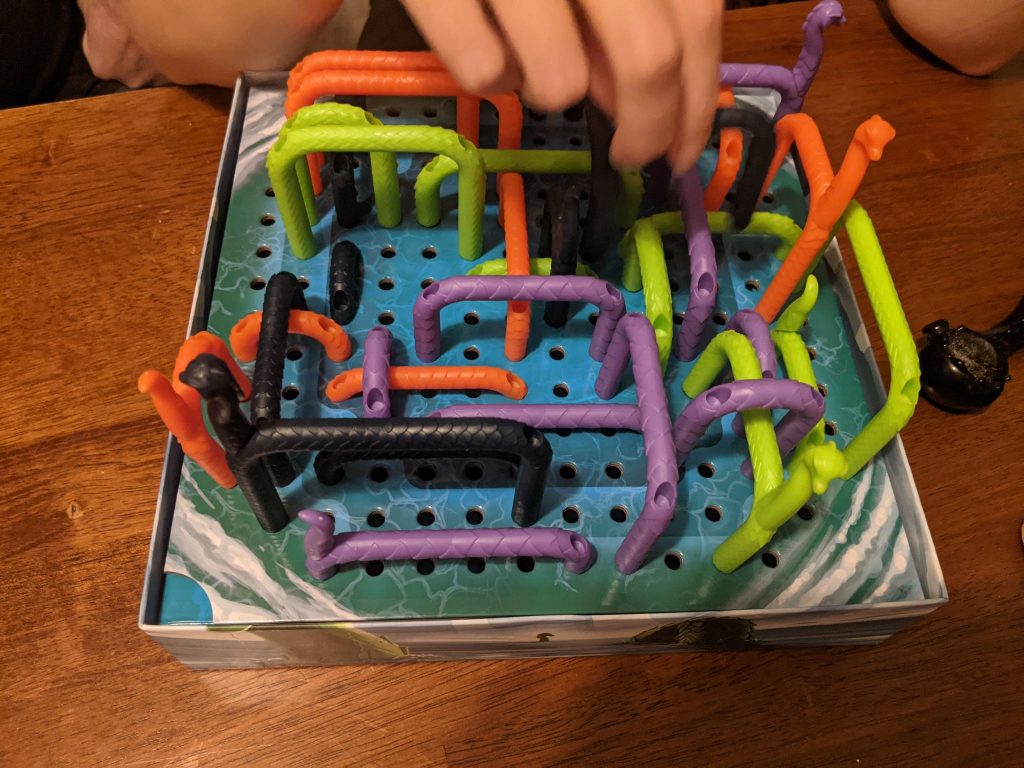
Lastly, I appreciate the ease of clean up with slots for monster segments under the lake. I do love a good storage design.
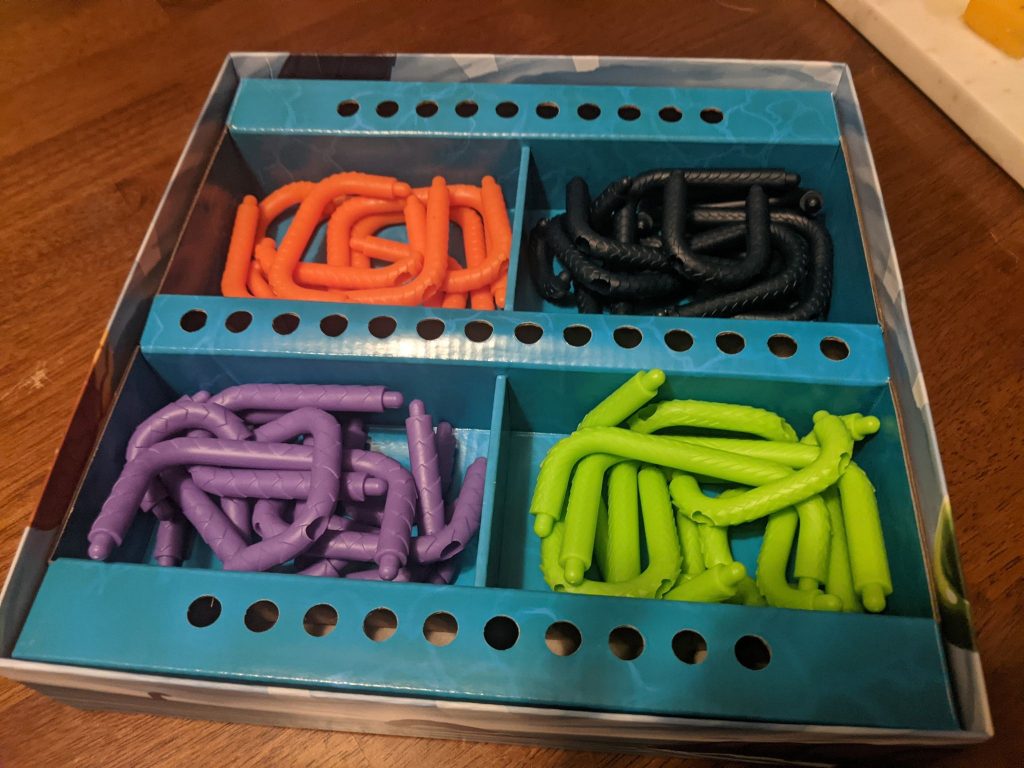
Block Ness is great for quick game sessions. It’s easy to learn and it put a smile on the face of my play group. I imagine kids would get a kick out of it given it’s a simple game about making a big colorful monster. Overall, if any of these concepts appeal to you, I’d recommend picking this up from Blue Orange Games.

